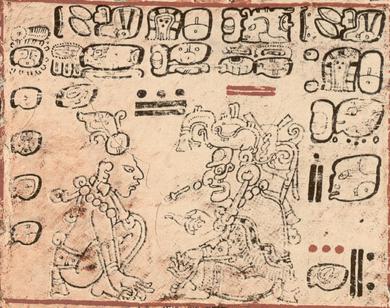
Article 7 of the gamer bill of rights: the player is allowed to skip the end credits after 60 seconds. Not so in Ubisoft’s Assassin’s Creed III, the recent AAA title. The end credits clock in at 18 minutes and 15 seconds, can’t be skipped, and the game doesn’t save until they’re over. Those credits are bookended by 6:35 of cutscene before and 1:45 of cutscene after, for a total of twenty-seven and a half minutes of non-interactive crap at the end of the game. Here, watch for yourself. No spoilers starting at 19:29 unless you didn’t want to know who the poor bastard was who spent weeks testing the accuracy of the Finnish localization or that Kathleen Parent is the “Human Ressource Director (Interim)” (sic) of Ubisoft Québec. Credit creep is growing in movies too, but at least you can walk out at the end of the film. What’s particularly offensive is if you quit out of the unskippable credits it doesn’t save, so you can’t keep playing in the after-game until you have half an hour to leave the console running. Awesome. The game itself is only OK. It shows signs of being rushed to release; the second half of the story makes no sense for all the things cut, there’s lots of animation glitches, etc. I love the core Assassin’s Creed game mechanics but AC3 frankly has too many different things in it, none polished to be really fun. And that final cutscene is pretty lame, they failed to deliver on the grand story they set up back in 2007 with the first game. The best part of the game is the multiplayer, an entirely different game, and a subtle alternative to the Battlefield / Call of Doodie / Halo shooter franchises.
I love this graph.
It's from JUPOS, a crowd-sourced
astronomy program to track atmospheric features on Jupiter. Specifically it's
a graph of the width and center of the Great
Red Spot since 2010, taken from observations from
hundreds of astronomers.
The project was started
in 1975 by an East German astronomer. Over time they've collected
historical
data back to 1785 and built a network of observers
using webcams (!)
to take pictures of Jupiter. This graph is a quick view of a
well known feature, they also track much more
detailed numerical data about Jupiter's atmosphere.
All this end-of-the-world nonsense is a good opportunity to learn a little bit about the Maya codices, the written record of one of the great civilizations of the New World. These tomes date back to the Mayan invention of paper in the 5th century and are a wonderful compendium of religion, science, culture, literature. Except you can’t study the Maya Codices. Because the fucking Christians burned all of the Maya Codices. Only three have survived and those are only half translated. There’s lots of blame to go around for this wholesale destruction of a culture, but a particular villain is Bishop Diego de Landa, a Franciscan, who brought the Inquisition to Mexico and tortured a bunch of Catholic Mayans for heresy. He’s a curious one; he was a scholar who spent a lot of time studying Mayans. His treatise on Mayan language and religion is one of the best contemporary ethnographies we have. But apparently all this scholarship was mostly in service to furthering his Christian god. We found a large number of books in these characters and, as they contained nothing in which were not to be seen as superstition and lies of the devil, we burned them all, which they (the Maya) regretted to an amazing degree, and which caused them much affliction.It wasn’t enough to slaughter millions of Mayans, steal their land and gold and people. These good men of god had to eradicate an entire culture. Barbarians of the worst kind. 
Grass Valley has a good dark night sky so I’ve been learning about backyard astronomy. I’ve found a few things that seem good, maybe some of these make a good gift idea for a friend of yours. I’m a rank beginner; these gifts are probably not appropriate for someone who already knows what they’re doing. Many of my choices came from recommendations from the Heretic’s Guide.
|
||

